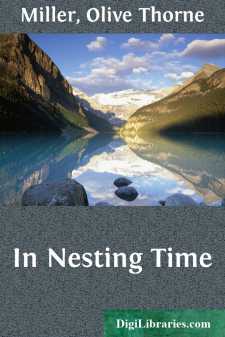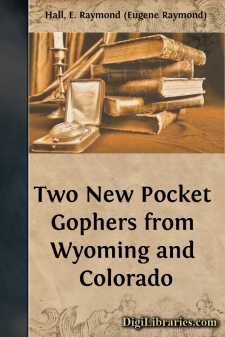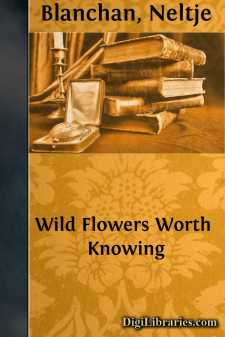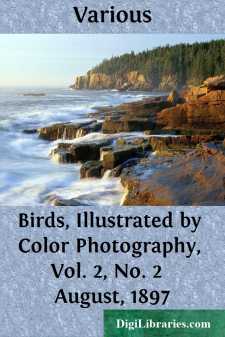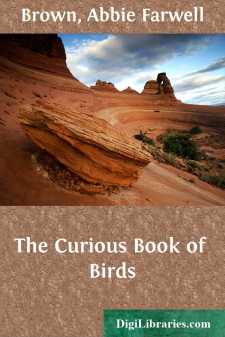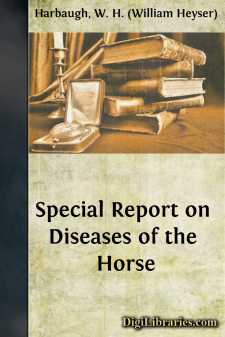Nature
Nature Books
Sort by:
by:
John Evelyn
INTRODUCTION. I Evelyn & his literary contemporaries Isaac Walton & Samuel Pepys. Among the prose writers of the second half of the seventeenth century John Evelyn holds a very distinguished position. The age of the Restoration and the Revolution is indeed rich in many names that have won for themselves an enduring place in the history of English literature. South, Tillotson, and Barrow among...
more...
BABY BIRDS. "Ears have they, but they hear not," may be said of all the world. Tragedies and comedies go on continually before us which we neither see nor hear; cries of distress and prattle of infants, songs of love and screams of war, alike fall upon deaf ears, while we calmly discuss the last book or the news from Borriboo-lah-Gha, as completely oblivious as if all this stirring life did not...
more...
In the academic year of 1947-48 Montague studied the geographic variation in Thomomys talpoides of Wyoming. His study was based upon materials then in the University of Kansas Museum of Natural History. Publication of the results was purposely delayed until previously reported specimens from certain adjacent areas, especially in Colorado, could be examined. In the autumn of 1950 one of us, Hall, was...
more...
by:
Neltje Blanchan
WILD FLOWERS WATER-PLANTAIN FAMILY (Alismaceae) Broad-leaved Arrow-head Sagittaria latifolia (S. variabilis) Flowers—White, 1 to 1-1/2 in. wide, in 3-bracted whorls of 3, borne near the summit of a leafless scape 4 in. to 4 ft. tall. Calyx of 3 sepals; corolla of 3 rounded, spreading petals. Stamens and pistils numerous, the former yellow in upper flowers; usually absent or imperfect in lower...
more...
by:
Various
BIRD SONG. E made several early morning excursions into the woods and fields during the month of June, and were abundantly rewarded in many ways—by beholding the gracious awakening of Nature in her various forms, kissed into renewed activity by the radiance of morn; by the sweet smelling air filled with the perfume of a multitude of opening flowers which had drunk again the dew of heaven; by the...
more...
THE DISOBEDIENT WOODPECKER ONG, long ago, at the beginning of things, they say that the Lord made the world smooth and round like an apple. There were no hills nor mountains: nor were there any hollows or valleys to hold the seas and rivers, fountains and pools, which the world of men would need. It must, indeed, have been a stupid and ugly earth in those days, with no chance for swimming or sailing,...
more...
PREFACE The contents of this book were originally delivered at Trinity College in the autumn of 1919 as the inaugural course of Tarner lectures. The Tarner lectureship is an occasional office founded by the liberality of Mr Edward Tarner. The duty of each of the successive holders of the post will be to deliver a course on ‘the Philosophy of the Sciences and the Relations or Want of Relations between...
more...
by:
Logan Marshall
CHAPTER I The Greatest Cataclysm in American History THE UNCONTROLLABLE FORCES OF NATURE—THE DEVASTATION OF OMAHA—THE TERROR OF THE FLOOD—A VIVID PICTURE OF THE FLOOD—THE TRAGEDY OF DEATH AND SUFFERING—THE SYMPATHY OF NATIONS—THE COURAGE OF THE STRICKEN—MEN THAT SHOWED THEMSELVES HEROES. Man is still the plaything of Nature. He boasts loudly of conquering it; the earth gives a little...
more...
In the examination of a sick horse it is important to have a method or system. If a definite plan of examination is followed one may feel reasonably sure, when the examination is finished, that no important point has been overlooked and that the examiner is in a position to arrive at an opinion that is as accurate as is possible for him. Of course, an experienced eye can see, and a trained hand can...
more...
by:
Anonymous
OUR PETS. This is Pol-ly's own cat, Top-sy. She looks ve-ry prim and quiet; but if you play with her, you will find she is a ve-ry mer-ry lit-tle cat. She will jump up-on the ta-ble at break-fast, and run off with Pol-ly's toast; and if mam-ma be wri-ting a let-ter, Top-sy will steal soft-ly a-long the arm of the so-fa, and rub her paw o-ver the last word mam-ma has writ-ten, and make a great...
more...



